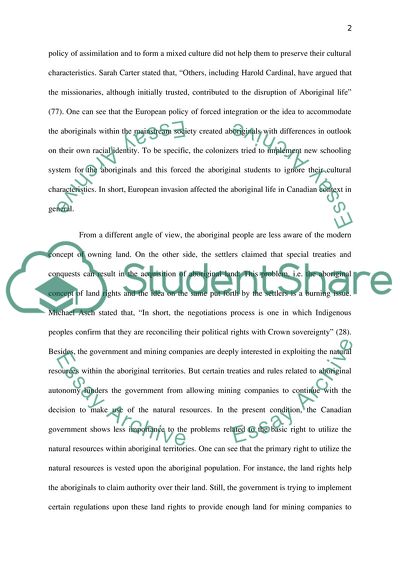Cite this document
(Aboriginal Culture and Traditional Life in Canada Case Study Example | Topics and Well Written Essays - 2500 words, n.d.)
Aboriginal Culture and Traditional Life in Canada Case Study Example | Topics and Well Written Essays - 2500 words. https://studentshare.org/history/1869578-aboriginal-culture-and-traditional-life-in-canada
Aboriginal Culture and Traditional Life in Canada Case Study Example | Topics and Well Written Essays - 2500 words. https://studentshare.org/history/1869578-aboriginal-culture-and-traditional-life-in-canada
(Aboriginal Culture and Traditional Life in Canada Case Study Example | Topics and Well Written Essays - 2500 Words)
Aboriginal Culture and Traditional Life in Canada Case Study Example | Topics and Well Written Essays - 2500 Words. https://studentshare.org/history/1869578-aboriginal-culture-and-traditional-life-in-canada.
Aboriginal Culture and Traditional Life in Canada Case Study Example | Topics and Well Written Essays - 2500 Words. https://studentshare.org/history/1869578-aboriginal-culture-and-traditional-life-in-canada.
“Aboriginal Culture and Traditional Life in Canada Case Study Example | Topics and Well Written Essays - 2500 Words”. https://studentshare.org/history/1869578-aboriginal-culture-and-traditional-life-in-canada.


